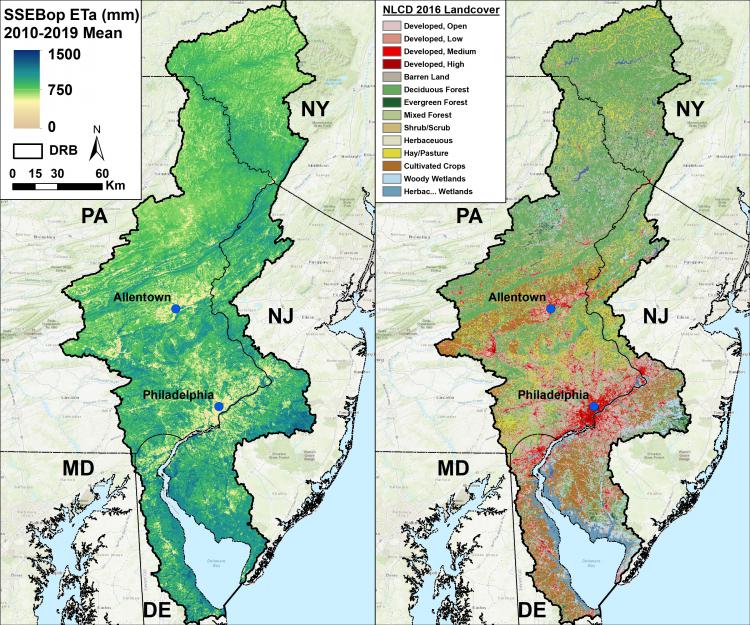The Delaware River Basin was chosen as a test bed for integrating USGS water and land use research to advance understanding on the interactions and feedbacks among climate, water availability, and land cover. Fundamental interactions can be observed from historical data and simulated using scenarios for changes in land use using projections in precipitation and temperature patterns. Scientists at the USGS Earth Resources Observation and Science (EROS) Center are beginning to apply satellite-derived evapotranspiration (ET) information to quantify water demands down to the parcel level. With a greater focus toward a collaborative, interdisciplinary modeling framework, they have begun to move toward field-level water accounting by first examining mapped relationships between the land cover and land surfaces fluxes such as ET. Using the National Land Cover Database (NLCD), initial work reveals that over 75% of the Delaware River Basin is covered with forests, croplands, and wetlands. Maps and spatial summaries of these dominant classes using time-integrated Landsat-based SSEBop (Operational Simplified Surface Energy Balance) ET information (2010–2019 average annual ET) show important patterns in magnitude and spatial context within a given cover type. For example, average water consumption through ET processes was: Wetlandsover 1,000 millimeter/year, Forests 900 millimeter/year, and Crops 800 millimeter/year. Data insights such as these are key to establishing linkages with land use and land cover models in conjunction with models of water use and availability. Staff at the EROS Center are further developing the methodology to respond to the needs of USGS Community for Data Integration and EarthMAP initiatives to advance integrated predictive modeling research for the Nation.
https://earlywarning.usgs.gov/ssebop

Delaware River Basin annual evapotranspiration (2010–2019 average) and land cover distribution.

